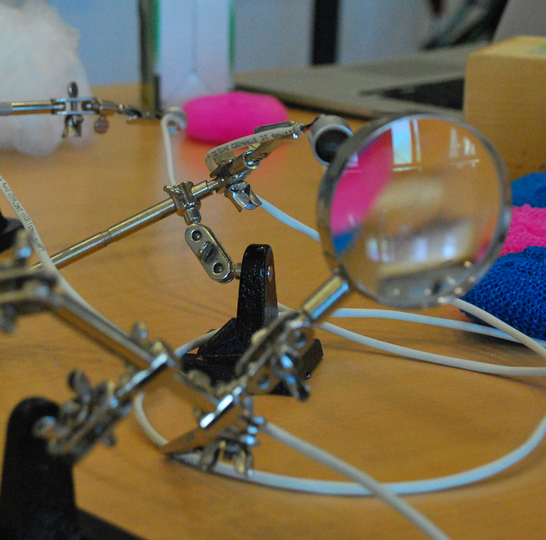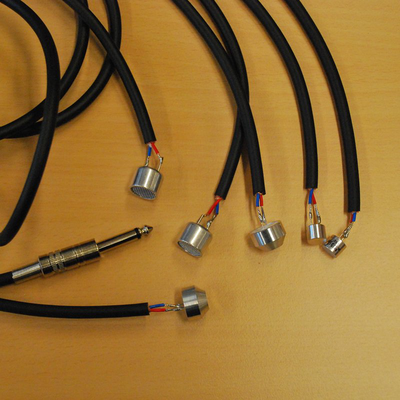{HHR, 11-jan-2018}
Looking at your way of experimenting with ultrasound, for me it was very interesting to see how you can create this continuum from the tactile to the audible using ultra-sound and signal processing. I had of course been aware of ultra-sound movement sensors, and of the use of ultra-sound speakers to produce directional/localized sound as distortion products in the audible range; what I find fascinating here is to bring the two together, especially when I first experienced your setup with the Doppler effect of movement in space becoming audible sound. With the low latency, one had the sensation of a synaesthesia between movement and sound. I move my hand or my body in space, and I hear a sound as if I was moving a mass through the ether. This was very distinct from the later more elaborate patches that kept a stronger feedback from microphone to speaker running, which was more "familiar" to me, and reminded me of the audible ecosystems approaches.
Over the winter break, I ordered a number of different ultra-sound transducers or senders/receivers; the results are quite different, in fact only the transducers resembling Ron's show a strong signal when used with line outputs. They do work at 96 kHz (Ron said to be checking for ringing artefacts from the anti-aliasing filter, though). In my quick testing, I didn't manage to reproduce the "moving sound in space" situation we had in the experimental studio, although something remotely similar. Talking with Ron, it becomes obvious that controlling their sensing and feedback is based on a lot of tacit knowledge that Ron has acquired over the years.
{function: comment, keywords: [tactile, doppler]}
{RK, 18-jan-2018}
The directionality of ultrasound plus the fact of its being up at a high frequency within the high spectrum, above human hearing but still within audible sound in the air where the air has impact, was interesting to me as a kind of site for working. Moreover, part of what I was interested in was the possibility of, instead of having patching happening electronically or internally or in an informatic way, the patching would be directional streams of sound. The piece works as a set of episodes, then within an episode all performance is just with physical objects. So everything is revealed in this sense. SuperCollider’s role is as a kind of functional program, it’s setting up this basic patch. And then all the instrumentality is physical. So it’s another factoring of it. Then that kind of gets into this new materialism, you know, the materiality of this, of the ultrasound.
{origin: conversation transcript, keywords: [materialism, patching, instrumentality, ultrasound, physical, material]}

